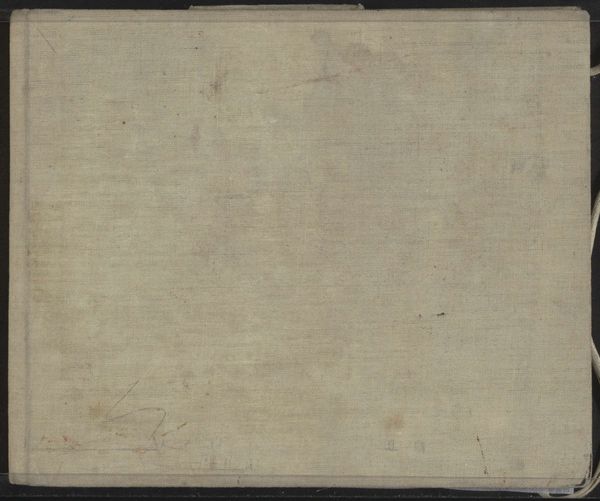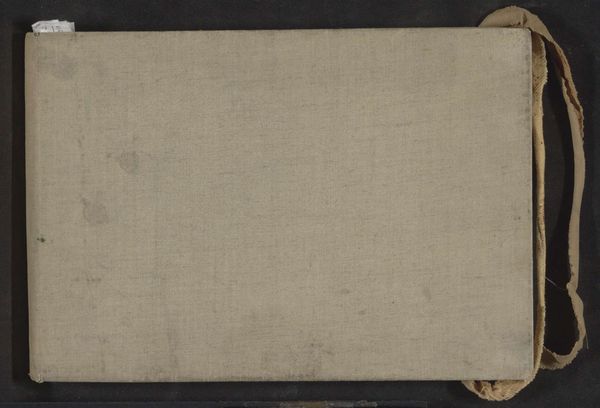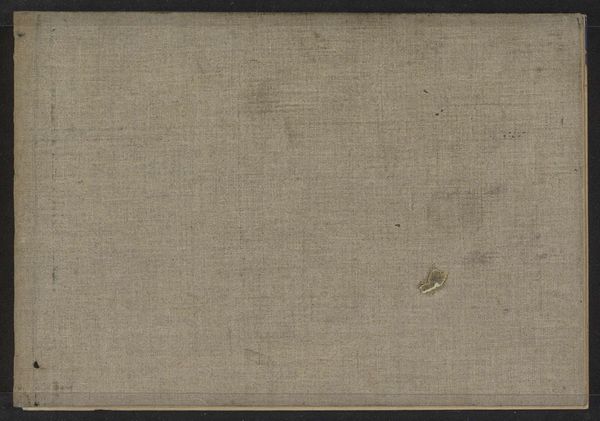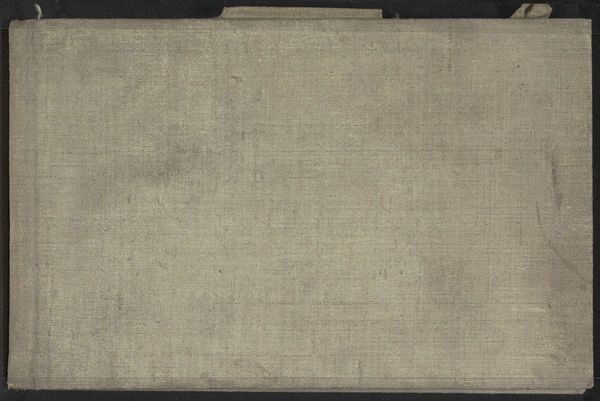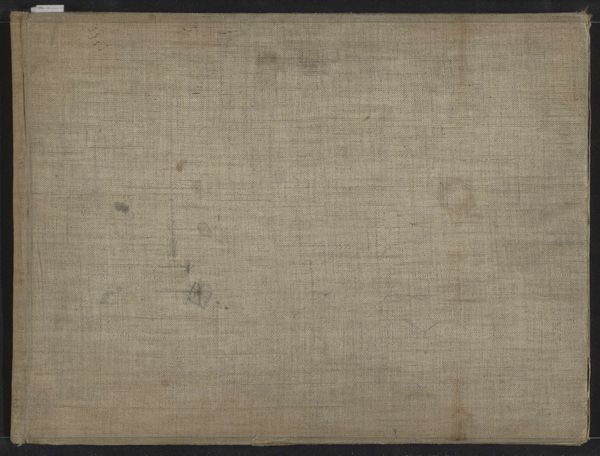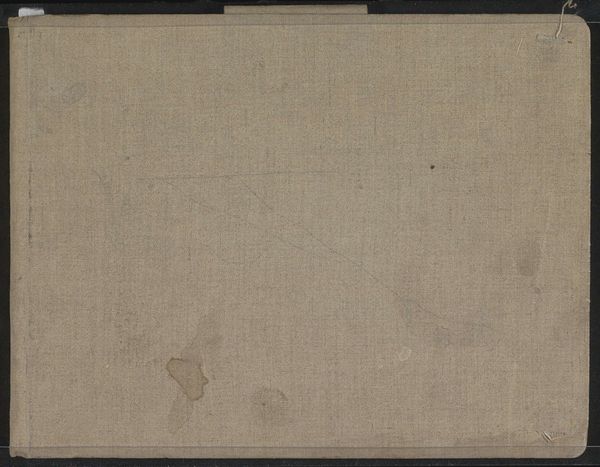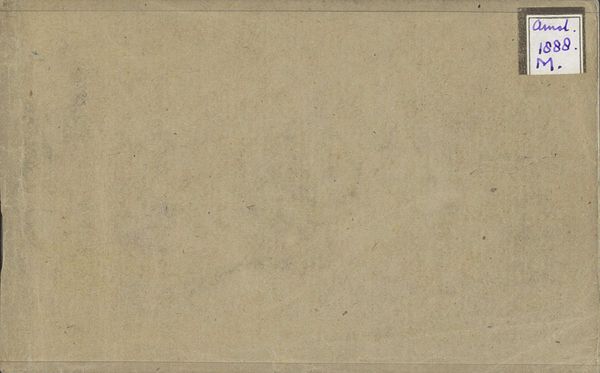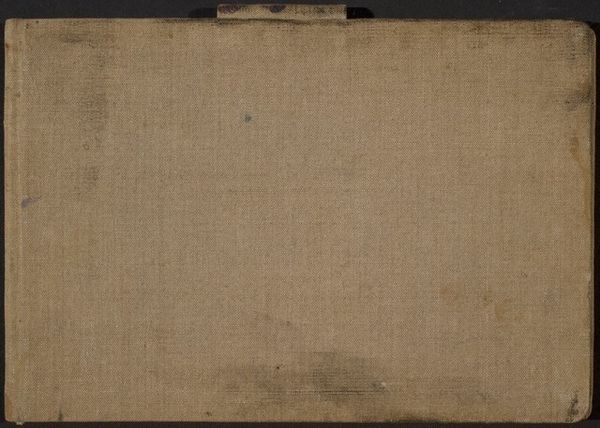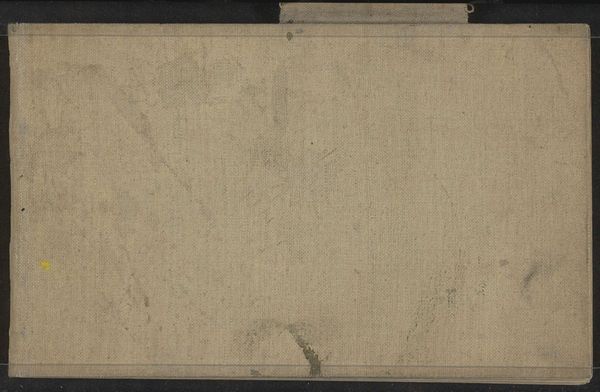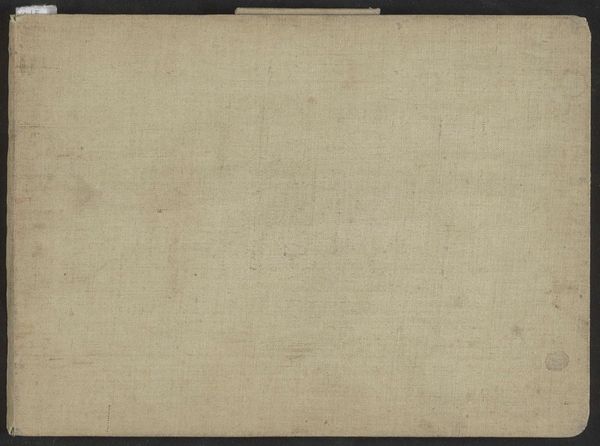
paper
#
paper
Dimensions: height 159 mm, width 246 mm, thickness 12 mm, width 490 mm
Copyright: Rijks Museum: Open Domain
Curator: It appears to be a simple, almost unassuming rectangle. Is this another one of those minimalist pranks? Editor: Hardly! What you're seeing here is "Schetsboek met 28 bladen," or Sketchbook with 28 Leaves, attributed to Bramine Hubrecht and dated between 1865 and 1913. It is currently held at the Rijksmuseum. While its cover appears rather plain, the beauty likely lies within the pages, which are of course inaccessible to us. Curator: Indeed, that's what I find perplexing. It seems rather coy to showcase the unadorned exterior and leave its contents shrouded. This cover projects a sense of waiting...of untapped potential. What statements were not said that should be? Editor: Or could not be said, given Hubrecht was a woman navigating a male-dominated art world. It’s constructed on paper; a deliberate, considered decision which begs the question: What sort of social spaces fostered its creation? Curator: Precisely, it's about the context! The paper cover reminds me of a stage curtain before a grand performance, except here, the curtain is perpetually down. Does it conceal brilliance, mediocrity, or something more subversive? It's a void pregnant with intention, even if that intention is privacy itself. Editor: The very notion of the private female artist's domain gains currency when we reflect on where Hubrecht fit in artistic circles, and if this object, or the content it once hid, were made with her personal liberation as inspiration? This reminds me of many 19th century female sketchbooks; it can be quite tricky teasing out their messages, because they weren't meant to be out for public review in the first place. Curator: It speaks volumes, regardless. The lack of overt expression IS the expression! It underscores how silence, denial, or coded communication can function as incredibly powerful symbolic languages, resonating perhaps even louder than declarative statements. This modest piece challenges us to look beyond what's immediately presented and interpret the loaded absence. Editor: Well said. I agree, the sketchbook's strength might just be in its restraint. It forces us to speculate and perhaps even project our own interpretations onto it. Food for thought!
Comments
No comments
Be the first to comment and join the conversation on the ultimate creative platform.
